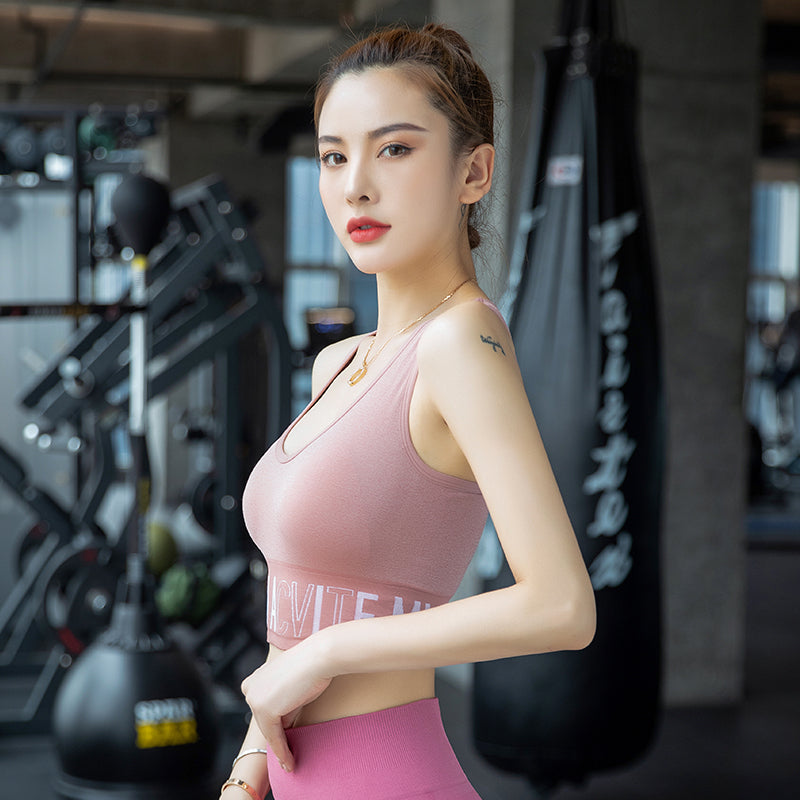How to prevent yoga sports vests from deforming

How to prevent yoga sports vests from deforming
First, prevent deformation from the cleaning process
Control the water temperature and washing method
Low-temperature hand washing is preferred: The water temperature should be ≤30℃. High temperature will damage the structure of spandex fibers, resulting in a decrease in elasticity. If machine washing is required, be sure to select the "gentle mode" or "underwear mode" and put it in a laundry bag to reduce friction on the clothes.
Avoid prolonged soaking: Soaking fabrics containing spandex for more than 15 minutes can easily cause the fibers to become loose. It is recommended to rinse immediately after quick scrubbing.
Choose neutral detergent
Alkaline or bleach-containing cleaners can corrode fibers. It is recommended to use a neutral laundry detergent with a pH value of 5.5 to 7 (such as the baby-specific type), and reduce the amount to half of the regular amount.
Clean the stains in sections.
For areas prone to dirt such as the collar and armpits, you can use a soft-bristled toothbrush dipped in a small amount of detergent to gently brush the local areas. Avoid rubbing the entire garment forcefully.
Second, drying and sun-drying techniques
Lay it flat and dry it in the shade
Lay the vest flat on a dry towel with good water absorption, roll up the towel to squeeze out the water (do not twist it), and then place it in a well-ventilated area to air dry naturally.
If you need to hang it, it is recommended to use a wide-shoulder seamless hanger to prevent the shoulder strap from stretching and deforming due to gravity.
Avoid direct sunlight and high temperatures
Ultraviolet rays can accelerate the aging of fabrics, so it is necessary to keep them away from direct sunlight. If the temperature of the dryer exceeds 50℃, it will cause the spandex to break and should be completely avoided.
Reverse drying prevents fading
Dark-colored or printed clothes should be hung with the inner layer facing outward to reduce the risk of color oxidation and pattern peeling.
Third, key points for storage and preservation
Avoid squeezing and folding
Long-term folding can cause irreversible creases at the shoulder straps and neckline. It is recommended to roll the vest into a tube shape (similar to a sushi roll) and store it upright in a drawer or storage box.
If you need to hang it, you can clamp the hem on both sides of the hanger to fix it and prevent it from slipping off.
Store the anti-hooking wires by category
Avoid mixing the vest with zippers or metal jewelry. You can put the vest separately in a cotton storage bag (such as an old pillowcase that has been transformed) and then place it in the wardrobe.
Moisture-proof and insect-proof measures
Place natural insect repellents (such as cedar wood blocks) in the storage box and check regularly for moisture. If the clothes have mold spots, you can gently wipe them with white vinegar and water (1:10) and then wash them again.
Fourth, details of usage and maintenance
Avoid excessive stretching when wearing
When putting on or taking off clothes, first adjust the shoulder straps and the hem. Do not forcefully pull directly from the head. If adjustments are needed during exercise, pause the movement and operate gently.
Reduce friction with rough surfaces
When doing outdoor yoga, avoid direct contact with rough ground. You can lay an anti-slip towel outside the yoga mat to reduce the wear and tear of your clothes.
Regular inspection and repair
Check the elasticity of the shoulder straps and whether the stitches are loose every month. If slight deformation is found, it can be gently ironed with a steam iron (low temperature setting) through a cloth to restore some elasticity.
Fifth, suggestions for material and style selection
Give priority to fabrics with high spandex content
Vests with an spandex ratio of ≥18% have more lasting elasticity, such as nylon blended fabrics containing 20% spandex.
Choose the reinforced design style
The style with widened shoulder straps (≥3cm), trimmed neckline and double-layer reinforced hem is more durable, avoiding thin shoulder straps or single-layer thin styles.
Avoid decorative and complex designs
Lace, sequins, three-dimensional prints and other decorations are prone to fall off or snagging during cleaning, while the simple style is easier to maintain.
Sixth, remedial measures after deformation
Minor deformation repair
Soak the vest in warm water containing hair conditioner (softening fibers) for 10 minutes, then take it out and lay it flat to dry. It can regain some elasticity.
Local sagging treatment
If the shoulder strap becomes longer, you can sew 2 to 3 parallel lines on the inner side of the shoulder strap with fine thread of the same color family to shorten the effective length (the sewing lines should be close to the edge to avoid rubbing the skin).
Severe deformation treatment
If the vest loses its elasticity as a whole, it can be transformed into a home wear or a sports bra. By pairing it with an outer layer, its service life can be extended.
Seventh, Common Misunderstandings and Corrections
Misconception: Adding fabric softener during machine washing makes it softer
Correction: Fabric softener can cover the surface of fibers, reducing their moisture absorption and sweat-wicking properties. Yoga wear should avoid using it.
Misconception: Spin dry vigorously before drying
Excessive spinning can cause fiber entanglement. You should first use a towel to absorb water before laying it flat.
Misconception: Long-term folding and storage save space
Correction: Folding may compress the fibers. It is recommended to use roll folding or hanging methods.
By using the above methods, the service life of yoga sports vests can be significantly prolonged, maintaining their elasticity and shape. The key lies in reducing destructive factors such as high temperature, friction and excessive stretching, and adjusting the care methods according to different materials.



Leave a comment
All comments are moderated before being published.